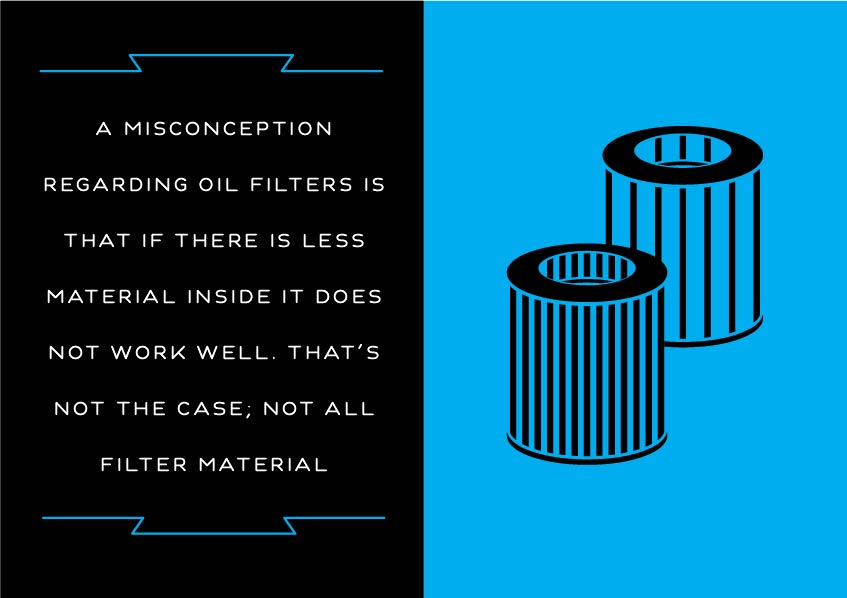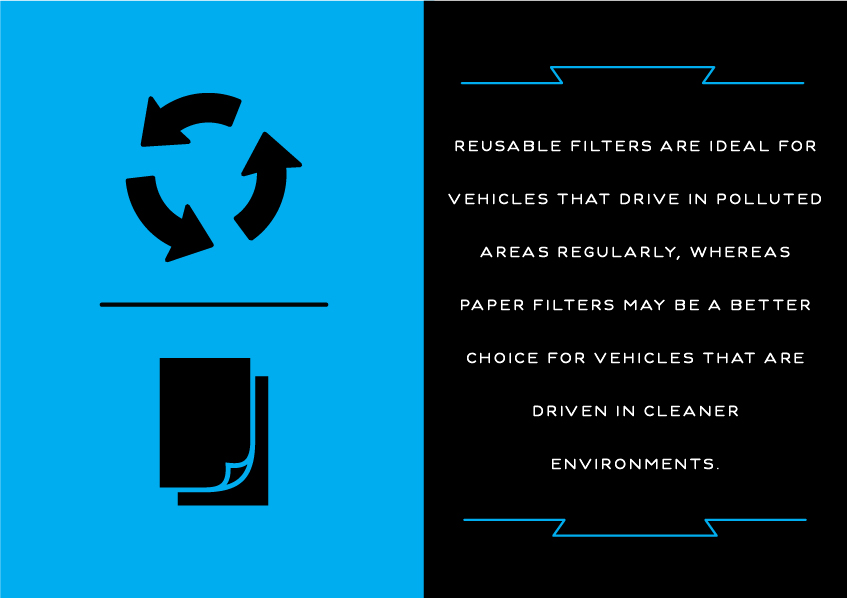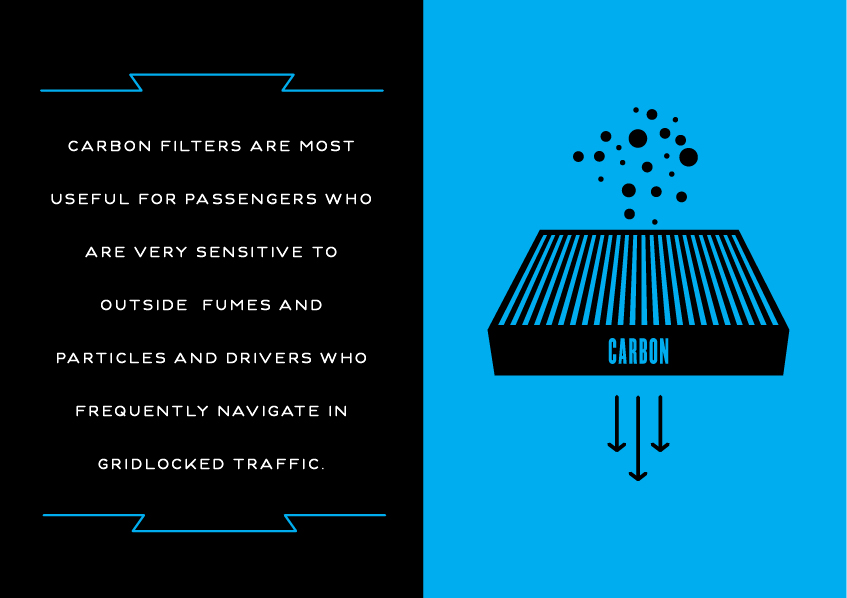There are many types of filters in every vehicle, and it’s important to choose the right kind.
Oil Filters

A misconception regarding oil filters is that if there is less material inside, it does not work well. That’s not the case; not all filter material is the same. In fact, there are many forms of material in the marketplace.
The amount of material does not always determine the efficiency or capacity of the filter; however, the type of material used is key in how a filter operates, says Tim Latham, Valvoline’s Product Line Manager. “Valvoline™ uses an advanced synthetic blend material, which provides excellent protection, high efficiency and greater capacity.” Note that traditional cellulose media is not as efficient as newer synthetic blended media.
Oil filters with traditional cellulose (paper) are usually lower quality filters with larger pores and lower efficiency. They usually provide less protection for the engine.
Oil filters with cellulose-glass-polyester-synthetic blend have microfibers that improve efficiency without sacrificing capacity. The polyester fibers provide superior durability. Overall, these oil filters improve engine protection. Following your recommended oil change interval (remember to consider how and where you drive) and using a quality oil filter is extremely important to protecting your internal engine parts for helping extend the life of your engine.
Here are tips for choosing the right oil filter:
• All filter manufacturers have a catalog, website, or app to look up the correct filter for your vehicle. Visit Valvoline Filters to find the right one for you, or download the app for iPhone or Google Play – Valvoline Service Parts.
• You’ll want to also ensure the filter you choose meets your OEM's requirements and is rated to last for the recommended drain interval (oil change interval) of your vehicle.
Air Filters
There are three types of air filters:
Paper Air Filters
Vehicles are typically factory-equipped with paper air filters. These are usually cheaper than other types of filters, but they do not last as long as the other types. So, in the long run, they can end up costing more than a reusable filter.
Gauze Air Filters
One advantage of gauze air filters is that they're designed to last for the life of the vehicle. With that said, you must still clean the filter with the recommended cleaning kit. There are two types of gauze filters: oil based and dry gauze filters. Oil based filters catch more of the harmful particles than the dry gauze filters do, but the filter must be oiled after cleaning. Dry gauze filters do not need to be oiled, but they do not provide as good filtration as the oil gauze filters do. Gauze air filters typically cost more than the stock paper filters, but they last much longer.
Foam Air Filters

These filters are often used for dirt track race vehicles because they are able to filter dust and maintain air flow. Foam filters are a good choice for vehicles that regularly drive in high polluted or dusty areas. These filters are reusable, but typically do not last for the life of the vehicle. Due to the material of these filters, it is possible for them to deteriorate over long periods of time, a process which could cause major problems to the engine. These are best for performance vehicles, rather than daily drivers.
Cabin Air Filters
Cabin air filters keep the air in the interior of the vehicle fresh by reducing irritating fumes and particles from the outdoors. There are two main types of cabin air filters: Carbon filters (also known as charcoal-activated cabin filters) and paper filters (also known as particle filters).
Paper Filters
Most vehicles are equipped with these filters at the factory. These filters typically have two layers: a polyester layer and an electrostatic-charged layer that traps particles in the air. Together these layers catch dust, bacteria, pollen and other pollutants to improve the quality of air in the cabin.
Carbon Filters

Carbon filters are most useful for passengers sensitive to outside fumes and drivers who frequently navigate in gridlocked traffic. These filters include a layer of activated carbon, or charcoal, that absorbs unpleasant odors and also traps more particles than paper filters.
Fuel Filters
In general, every vehicle comes equipped with both an inline fuel filter and strainer to clean the fuel. They each filter different sized particles to ensure the fuel is clean before it combusts.
Inline Fuel Filters
These filters are designed to improve the performance by filtering out contaminants present in the fuel. This allows for the fuel to combust more efficiently. The inline fuel filter can remove particles as small as 10 microns.
Strainer
The fuel strainer is located between the fuel tank and fuel pump. It can filter out particles of 30 microns. Strainers serve the same purpose as the inline filter.
- Prior to using or installing any of these products always consult your vehicle’s owner’s manual for compatibility and warranty information.
- Always take appropriate safety precautions when working on or operating your vehicle. Take the necessary steps to help prevent injuries; always use protective gear like helmets, safety goggles, and gloves.


Don't miss out on new content
Thanks for signing up. Set your password and start earning reward points for everything you do on the site.
You already have a Team Valvoline account. Sign in here.
Did you forget your password?